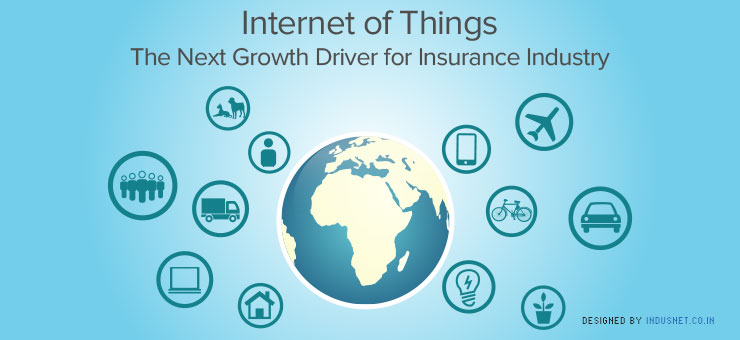
With the evolving technology, the world is becoming more connected. The Internet of Things (IoT) is one such technological advancement that is making the world safer and healthier. In this respect, insurance sector is an important industry to talk about when it comes to IoT. It has a material impact on the static insurance industry. However, the question is how big will the impact be?
SMA survey shows that 74% of insurers plan to invest in IoT by 2016, with 7% already planning some serious investment. Insurers are now presented with tons of opportunities to use digital technologies and create more business prospects. For instance, this connected ecosystem is an excellent medium for relevant engagement of consumers with their cars, homes and selves-
The Internet of Things – A Big Game Changer for Insurance Sector
Less risk with more opportunities
IoT helps to resolve the social challenges of our time and create value for both the individuals and companies. For example, autonomous driving and driving assistance system will significantly reduce the number of accidents and the amount of damage they can cause in future. Also active household automation systems can prevent hazards and risks such as fire and theft. The system enables the users to act more carefully and responsibly which ultimately reduces failures and accidents leading to insurance claims.
Better pricing strategy
With more personalized and flexible insurance policies, insurers can offer their customers more enhanced, safety and lower premiums. For instance, how you intend to use the car to commute in heavy and medium traffic will influence what you pay for insurance. Also if sensors could notify a homeowner remotely through mobile app regarding a burst pipe, it can reduce the frequency and severity of insurance claims.
Direct customer contact
Insurers can gain direct access to their target groups through products based on networked objects and services. The daily use of networked products allows companies to acquire valuable information required to understand the current situation and needs of their customers. Accordingly they can offer them further products and services that match their current situation. If customers find this experience fruitful, it reinforces their confidence in the service providers and leads to more and new business opportunities.
Cross-selling opportunities with micro targeting
When assistance service providers get automatic notifications during any emergencies, this helps them to better support senior citizens especially who live alone. This program popularly called Ambient Assistant Living aims at enabling elderly people to lead an independent life in a homely environment. Moreover, sensors installed throughout the home give insurers the ability to remotely monitor their health and daily activities and provide better medical assistance. The insurers can also offer appropriate policies covering equipment and care.
Higher customer satisfaction
Minimum risks and dynamic pricing creates more transparency between the insurers and the customers. Customer awareness on the factors that impacts their insurance premium not only prevents premium loading but also helps customers to better control their plans.
The Major Obstacle Behind the Adoption of IoT in Insurance
Sharing information across multiple devices and sensors impose security threat. These potential threats could lead to more and more claims for insurance firms. In short, IoT is hackable. However, insurance companies are looking for automation metrics to help manage these risks on a personal and commercial basis.
Internet of Things – An Image Booster for Insurers
As insurers can accompany their customers through every stages of their lives offering them comfort and security, IoT shift their image from being ‘pure risk insurers’ toward being ‘smart life companions’. Such high level of automation and smart IoT systems could reduce the human error elements completely, thereby reducing the need for insurance or the complete absence of insurance. IoT is surely to provide transformational opportunities to improve business intelligence and make better decisions.